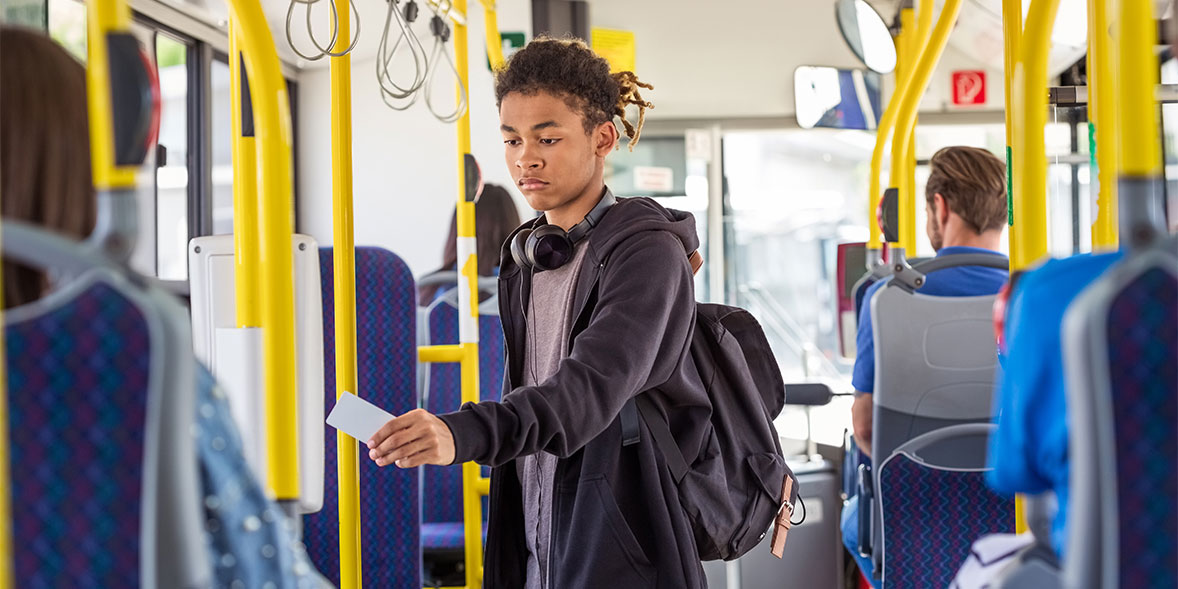Bus fares capped at £2 - how else can you save on transport in 2023?

A government scheme, which capped single bus journeys in England at £2, has been extended until the end of October, and could save passengers £12 per journey for the most expensive routes.
If you use the bus to commute to work, visit friends and family, or for shopping and leisure, this scheme - called 'Get Around for £2' - could be a good way to save money during the cost of living crisis.
Here, Which? explains how the scheme works, and suggests other ways to save money on transport this year.
How does the 'Get Around for £2' scheme work?
First announced in September 2022, single fares for participating bus journeys were due to be capped at £2 until the end of March. However, in February the Government announced the scheme would run for an extra three months, taking it until the end of June.
The Government has now said the cap will be extended again until 31 October, to help people on lower incomes, and from November will rise to £2.50 for 12 months before prices are reviewed.
Return fares will remain at their usual price. In some cases it may be cheaper to get two single fares rather than a return.
You don’t need to do anything to get the reduced £2 price, as it will be applied automatically when you take a journey.
The cap covers bus routes with 130 participating operators, including Arriva and Stagecoach. You can check which operators are continuing with the scheme after June on the government's website.
- Find out more: 50 ways to save money
Are there any restrictions?
The scheme only applies to journeys in England - so bus journeys in Wales, Scotland and Northern Ireland do not come under this scheme.
Not all bus operators in England are taking part, and some operators have excluded specific routes. The government has set out more details about bus routes not included in the fare cap on its website.
The fare cap does not apply to bus services in London, as these have their own set of caps.
How much can you save?
The amount you save will depend on how expensive your regular bus route is, and how often you take the bus.
The government estimates the average person will save almost 30% of their usual fare, but customers on some routes can save as much as 87%.
Here are some of the biggest savings on the longest routes in the country, according to the DfT:
| Journey | Normal fare | Amount saved £ | Amount saved % |
|---|---|---|---|
| Leeds to Scarborough | £15 | £13 | 87% |
| Lancaster to Kendall | £14.50 | £12.50 | 86% |
| Plymouth to Exeter | £11.20 | £9.20 | 82% |
| Hull to York | £8.50 | £6.50 | 76% |
| Newcastle to Middlesbrough | £8 | £6 | 75% |
Source: Gov.uk
Which? Money Magazine
Find the best deals, avoid scams and grow your savings and investments with our expert advice. £4.99 a month, cancel anytime
Sign up now
How to save on transport in 2023
Although the cost of bus fares will be going down, it's a different case for train fares. Here are some of the ways you can save money this year.
Beat the rail fares increase
Regulated train fares in England and Wales went up by 5.9% on 5 March. This includes season tickets on most commuter journeys, some off-peak return tickets on long-distance journeys and anytime tickets around major cities.
To save money on rail travel across the UK, it's usually worth buying a railcard. They cost no more than £30 a year, and essentially pay for themselves with the money you can save off a few train journeys. There are nine railcards available with discounts varying from a third to 50% off.
There are a lot of other hacks on our guide to getting cheap train tickets, including splitting your ticket and setting alerts for when advanced tickets go on sale.
Make sure you also remember to claim money back for any delayed journeys - you’ll be eligible for some cash if your train has been cancelled or delayed by 15 minutes or more.
Consider a coach
It may be cheaper to get a coach to your destination instead of a train, especially if you’re not in a rush.
For example, popular routes like London to Manchester can cost as little as £6.88 with Megabus - but the journey will take five hours, compared to just two hours on the train.
There are additional student discounts available - for example, students can save an extra 10% at Megabus with a Totum card.
Alternatively, you may be eligible for a Coachcard with National Express. This works in a similar way to a Railcard; you can save a third on fares and there are three options available: Young Persons Coachcard, Senior Coachcard and Disabled Coachcard.
Which? Money Podcast
Join us on our weekly audio show for the latest money news and personal finance hacks to help make you better off.
Listen now
Shop around for fuel
If you have a long car journey coming up, your best bet is to search for the cheapest pump you can find before you fill-up.
Analysis by the Competition and Markets Authority (CMA) published in December 2022 found fuel prices varied widely between local areas, with higher prices at petrol stations more common where there are few competitors nearby, and where there is no local supermarket.
We found that fuel at supermarket pumps is typically cheaper by a few pence per litre than it is at other garages.
It can be worth checking comparison site Confused.com, which compares prices at forecourts, and can be used to find cheaper options near you.
You could also try car sharing with work colleagues or friends where you can, and splitting the fuel costs between you.
There are also several apps that can help match you with a car-sharing buddy, including Liftshare and BlaBlaCar - just remember to take precautions, such as checking a potential car-sharer's ratings, before you get in a car with them.
- Find out more: how to save money on fuel
Cycle to work
Cycling won't be an option for everyone, but if you'd like to try it and you don't own a bike, you could take a look at second-hand deals.
You can also save money on the cost of a new bike with the Cycle to Work scheme, if your employer is signed up to it.
You start by choosing the bike you want. The bike is bought by your employer, who then leases it to you. Many employers can reclaim the VAT and have the option of passing this saving on to you.
Your salary will be reduced by the net cost of the bike for the hire period, spreading the cost across several months. Once the hire period ends, you can buy the bike from your employer at a 'fair market value' set by HMRC.
- Find out more: salary sacrifice schemes explained
Are you worried about your finances?
Answer a few questions and we'll give you a tailored list of expert advice that will help you manage your finances.
Get started
This story was updated on 17 May to add in details about the scheme being extended until the end of October.
